The information contained in “How Does an Influencer Brand Deal Work?“ is for informational and educational purposes only. It is not to be construed as legal advice. Reading this article or relying on information from this article does not ever create an attorney-client relationship between you and Katherine Jaquith (aka Kate Cooper). Please speak with a licensed attorney for individual advice.
Are you wondering how an influencer brand deal works? Then you’ve come to the right place!
If you’re new to the world of social media influencer marketing or are just curious about how brand deals work, this article will help break down the entire process from outreach to final payment. Keep in mind, every brand deal is going to play out a little differently, but this is the general framework that most follow.
This article shares the 5 different phases of a brand deal. I’ve worked with dozens of brands as a content creator, including well-known brands like Target, Merrell, Coors Light, and Eddie Bauer, so I understand the world of influencer marketing and working with brands as a content creator.
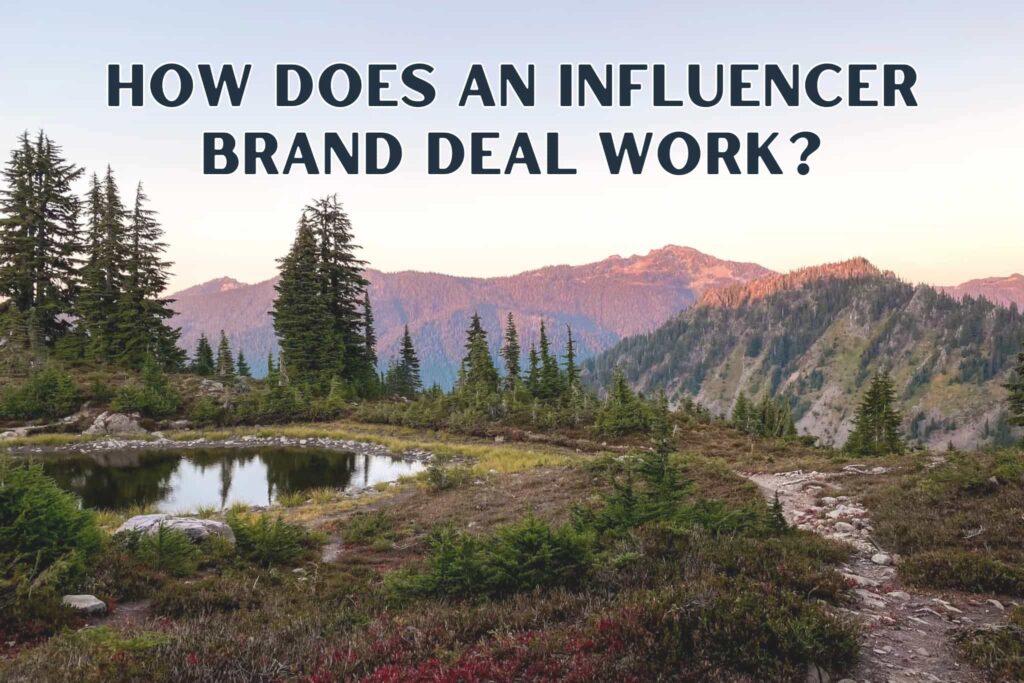
The Influencer Brand Deal Process
1. The Connection Phase:
During the first phase of an influencer brand deal, you need to make a connection with the brand. This can happen a few different ways:
i) The brand reaches out to the you.
If a brand reaches out to you, it will typically be via email. This is why it’s often recommended to keep your email address in your social media bios and on your website. The brand itself may reach out directly, but it’s also common for PR agencies to run influencer marketing campaigns. Regardless of who reaches out, make sure you vet the contact and keep an eye out for red flags to make sure it’s a legit deal.
ii) You and the brand connect on an influencer marketing platform.
There are many influencer marketing platforms out there and it seems like there are new platforms popping up every day. Influencer marketing platforms make it really easy to connect with brands and land campaigns. However, it’s worth noting that the rates offered on influencer marketing platforms are typically lower than they would be if you were working directly with the brand. It’s also very important to read the platform’s terms and conditions carefully so you understand what you’re really agreeing to, include the usage rights you’re providing.
iii) You pitch the brand.
You don’t have to wait for your dream brands to find you as an influencer. You can proactively pitch brands your content creation and influencer marketing services. Brands are always looking for new creators and influencers to work with, and oftentimes they have no idea you exist unless you put yourself directly in front of them. There’s a lot that goes into crafting a strong pitch and finding the right contact to send it to. You want to make sure that you communicate the value you can provide to the brand (as opposed to focusing on what the brand can do for you) and are prepared to send a media kit.
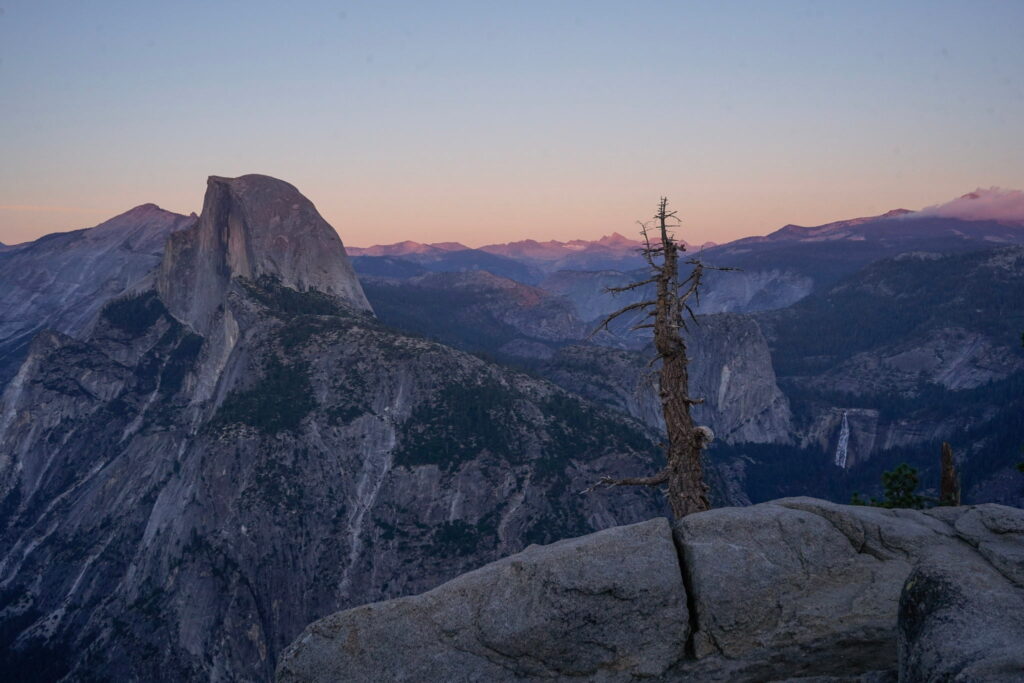
2. The Negotiation Phase:
After you and the brand make an initial connection, you move into the negotiation phase. During the negotiation phase of the influencer brand deal process, you and the brand (whether directly or through a PR company or influencer marketing platform) will go back and forth to figure out what your partnership is going to look like. The important terms of the partnership you should discuss include:
i) The deliverables you’re responsible for.
ii) The rate the brand is paying you.
iii) Other important terms, including usage or whitelisting rights for the brand and exclusivity. Providing a brand with usage rights (particularly paid usage rights) or agreeing to exclusivity is an additional piece of value that you can provide a brand, so they should be factored into your rate.
iv) The general timeline for the campaign, along with the campaign brief (if any) or guidance regarding the content you’re expected to create. You want to make sure that you’re factoring things like short deadlines, and production time and costs into your rate.
Depending on the nature of the campaign you and the brand may go back and forth numerous times to negotiate the terms of the brand deal. Some campaigns may require you to accept certain deliverables for a specific rate without room for negotiation. Influencer marketing platforms tend to be the least flexible when it comes to being able to negotiate specific terms of a partnership.

3. The Contract Phase:
The contract phase is arguably the most important phase of the brand deal because this is where you officially formalize the partnership and land the brand deal. Having a written contract is important during a brand deal because it clarifies the obligations of both parties, helps manage expectations, and protects you in the event of a dispute. A good brand deal contract should also cover your legal obligations, like FTC disclosure requirements and information regarding your status as an independent contractor.
It’s important that you read your brand deal contracts carefully. You want to make sure that the contract accurately reflects the terms you discussed with the brand. You also want to keep an eye out for surprise contract terms. If you want to know 8 of the most important terms to include in your brand deal contracts, you can download The Brand Deal Contract Checklist for FREE.
Reviewing Your Brand Deal Contract
During a brand deal, brands will typically provide you with a contract. However, I always encourage influencers to have you own contract available to present to the brand if necessary. Having your own contract as an influencer can also provide you with guidance and specific language that you can use when it comes to negotiating the terms of a brand’s contract.
Keep in mind, it’s not uncommon to make revisions to the brand deal contract, especially if you’re working with a contract that the brand provided. If you’re representing yourself as an influencer, then it’s important to advocate for your interests!
If you need your own influencer contract template, you can purchase an Influencer Agreement from The Legal Influence Contract Shop HERE.
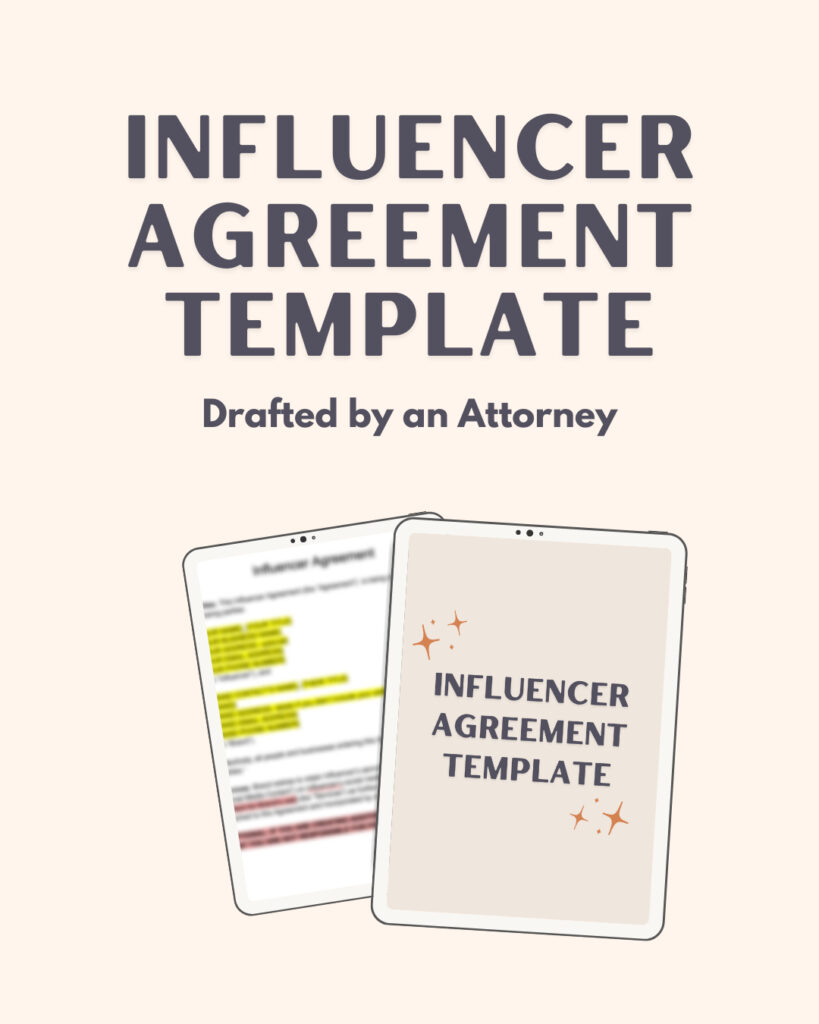
4. The Creation Phase:
The creation phase is where you get to shine and operate in your zone of genius creating awesome content for the brand. It’s not uncommon for a brand to provide a creative brief that outlines their goals and vision for the content. If this is the case, the brand should have provided the creative brief during the connection or negotiation phase of the brand deal so you have an opportunity to review it and make sure you’re able to execute the brand’s vision.
I believe creative freedom is incredibly important during an influencer partnership. You know your audience best, which includes knowing the type of content and messaging that will resonate with them best. Brands should be careful not to stifle an influencer’s creative freedom. A creative brief can provide helpful guidance, but ideally the guidance shouldn’t be too strict. If a brand wants to have more creative control over the content, then a UGC campaign may be a better marketing strategy than an influencer brand deal.
Review & Post
After creating the content you will likely need to send it to the brand to review before posting it. From there, the brand may request edits or revisions. Ideally, you have a clear revision policy in your brand deal contract that outlines what should happen in this situation. Once you have final content approval, you will post the content to your social media channels at an agreed upon date and time.

5. The Wrap Up Phase:
After you post the content on your social media channels, you enter the wrap up phase. This is where you’re going to provide the brand with analytics and KPIs (key performance indicators) from the campaign. This includes important metrics such as the reach, number of likes/saves/shares, link clicks, and any comments you received about the brand or the content.
You also want to make sure that you send an invoice and any necessary tax information, like a W-9, as soon as the campaign is completed. Getting this information to the brand as soon as possible helps to prevent late payments.
It’s important to remain professional throughout the entire brand deal, which includes promptly responding to emails (within 24 hours), meeting deadlines, and creating the best content you possibly can. Don’t be afraid to follow up with your point of contact after a campaign to negotiate longer term or future partnerships!
Pin It For Later:
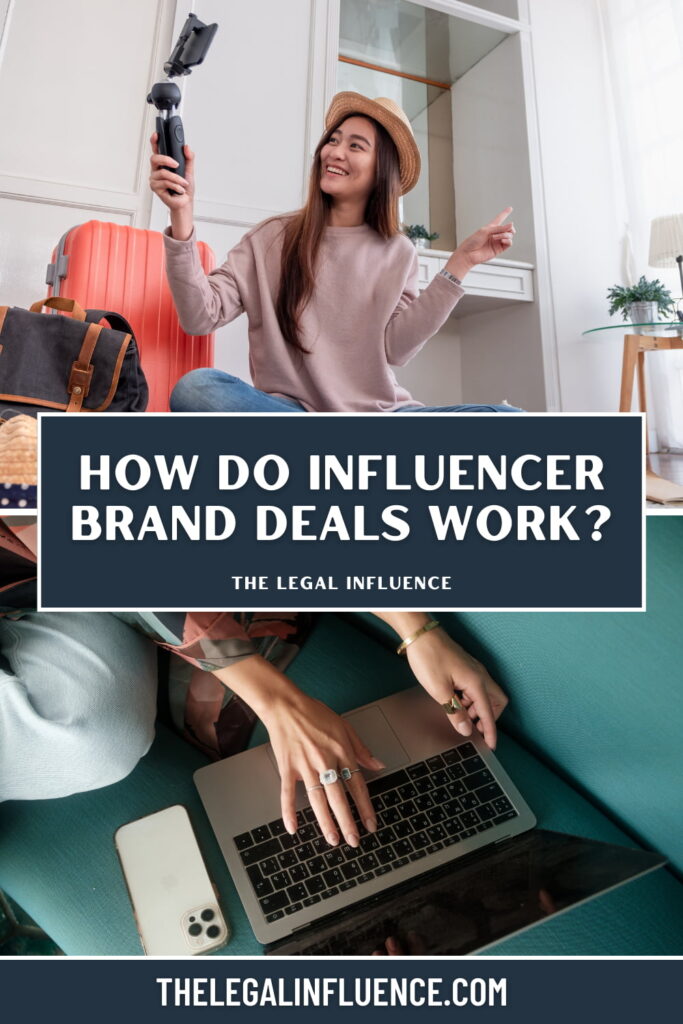
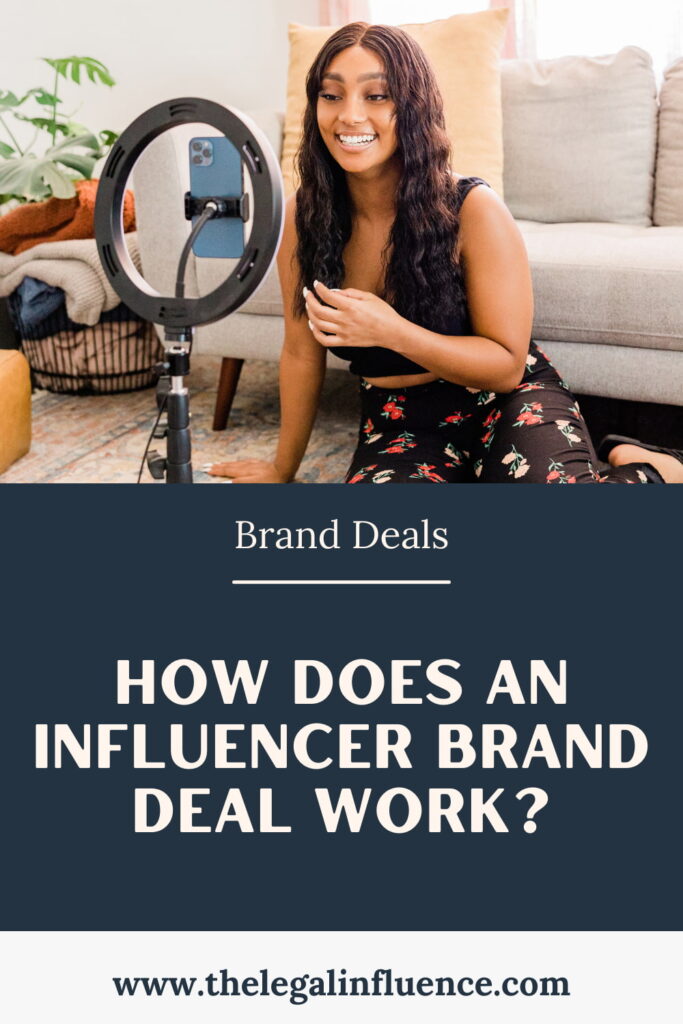
View comments
+ Leave a comment